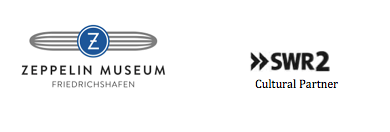Virtual realities in contemporary art
November 11, 2017–April 8, 2018
Seestraße 22
88045 Friedrichshafen
Germany
Hours: Tuesday–Sunday 10am–5pm
T +49 7541 38010
F +49 7541 380181
info@zeppelin-museum.de
The popularization of virtual reality has created a visual revolution that radically changes both our perception of images and our relationship to reality. Virtual spaces create illusionary worlds that can be directly experienced. Viewers immerse themselves in impressions as far away as possible from the outside world, thereby becoming physically involved through interactive elements that resemble their body. Through virtual reality, the audience becomes part of an image that fills their entire field of vision.
Technologies suitable for mass consumption, such as VR glasses, 3D cardboards, 3D projectors and televisions, are increasingly found in everyday life. The various fields of application for these technologies, including 3D-supported operation monitoring, video games, trauma coping and the digitization of lost cultural treasures all illustrate how virtual spatial images already influence different areas of our world and will continue to shape our future.
The exhibition Beautiful New Worlds addresses these recent developments in image technology and explores the resulting entanglement of virtual and physical spaces. A particular focus is placed on the socio-political potential of virtual technologies. In the crosshairs between illusion and critical distance, different artistic positions examine the possibilities presented in the fields of forensics, the porn industry, and modern warfare; after all, control over virtual space is always interlinked with control over physical space. Virtuality and reality are tightly intertwined with one another.
The escape into illusionary worlds is by no means a new phenomenon. Rather, it is grounded in long traditions. Panoramas, dioramas and stereoscopes illustrate the centuries-old history of mankind’s interest in immersive media. The starting point of the exhibition are stereoscopic photographs, which accompany the history of the Zeppelin from 1900 to the 1930s.
In an exhibition space spanning over 1000 square meters, 13 internationally renowned artists will address the relationship between virtual and physical spaces. In this way, the exhibition reflects different varieties of virtuality. Together with the Berlin-based architecture firm Kooperative für Darstellungspolitik, an exhibition course was created in order to make the complex relationship between virtual and physical spaces bodily perceptible for the audience. The range of virtual reality is explored through simulations in which the physical environment is artificially reproduced, through 3D videos, and through virtual reality spaces that create an all-encompassing illusionary space.
Working closely together with immersive visual media, the artists have collaborated with programmers to further develop the existing technology and revitalize the interdisciplinary interface between contemporary art and technological innovation.
Participating artists: Halil Altindere, Salome Asega & Reese Donohue & Tongkwai Lulin, Trisha Baga, Banz & Bowinkel, micha cárdenas, Harun Farocki, Forensic Architecture, Sidsel Meineche Hansen, Florian Meisenberg, The Nest Collective
Zeppelin Museum
The Zeppelin Museum is the world’s largest museum for airship technology and is the only museum in Germany to combine the fields of technology and art. Located in a protected Bauhaus train station on the shores of Lake Constance, this museum continues to explore the relationship between technological innovation and artistic potential. This has resulted in a variety of fascinating exhibitions over the years, including the most recent extensive exhibition on the possibilities of virtual art.
In a society that relies on technological innovation to fuel everyday life, museums and exhibitions like this are necessary to start the discussions relevant to the concerns of our digital age. In a field which is just beginning to take the art world by storm, this is a first insight into the revolution virtual reality will have on the perception and creation of contemporary art.
Zeppelin Museum press contact: lipski [at] zeppelin-museum.de
International press contact: jspindelmann [at] goldmannpr.de



